how to come up with character designs
When we think of some of our favorite characters, from Superman to Pikachu, design is often that last thing that comes to mind. That's what good character design does: it hides the designer and leaves behind only a memorable character. But great characters don't come from nothing—they are the result of planning, visual storytelling, choices and artistic skill.
For this reason, character design can be harder than it at first appears. The design has to evoke who the character is and that means the designer must be skilled at using nonverbal, visual elements such as expression, gesture, color and clothing to communicate personality traits. This is especially true for simplistic character styles, where the designer has to communicate more with less.
You may also have to make technical considerations such as whether the design can be easily animated. On top of that, there's the question of originality and staking out your own character design style.
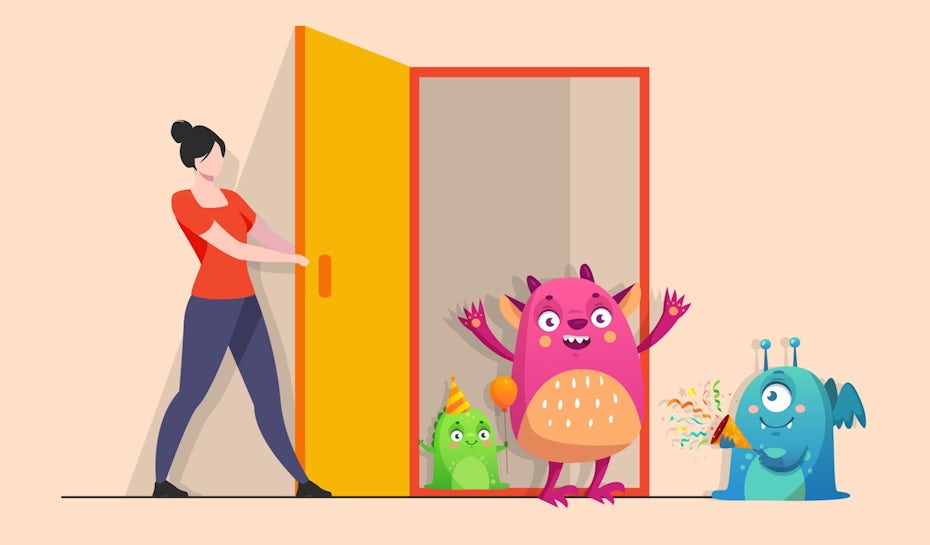
Fortunately, character design is a fairly old practice, and there are common tips and workflows that can guide aspiring designers from concept to finished artwork. With that said, every artist is going to have a different approach that works for them. With both of these factors in mind, we've put together this ultimate guide to character design to provide a step-by-step process and specific character design tips and advice from professional designers who are experts on our platform.
The step-by-step character design process
—
- Develop a concept
- Create a character profile
- Brainstorm the details
- Do your research
- Research the target audience
- Gather reference images
- Choose the best tools for your project
- Start with thumbnails (a lot of them)
- Work small and fast
- Pay attention to overall shapes and silhouettes
- Finalize your sketch
- Finalize the pose and fine details
- Gather feedback before proceeding
- Render your character design
- Digitize the sketch
- Focus on value
- Add color
- Add the finishing touches
- Decide on a background
- Put together a presentation
Step 1: Develop a concept
—
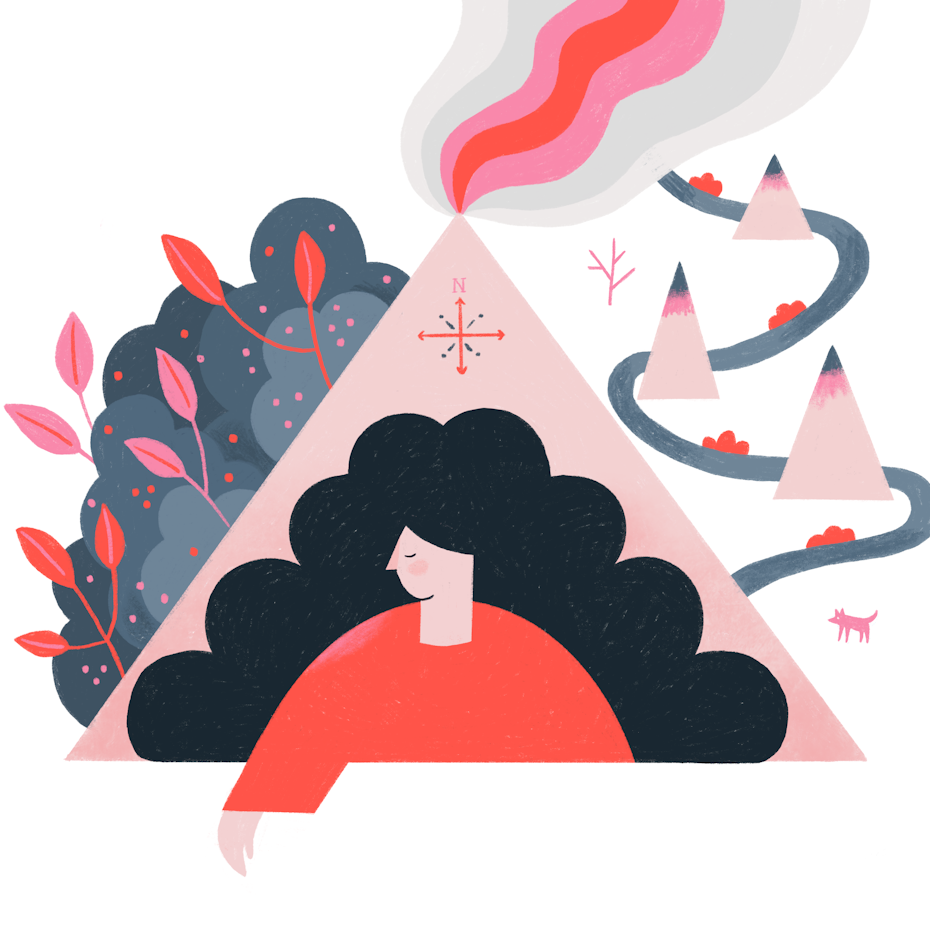
Character design belongs to a class of illustration called concept art. It is about communicating the artist's vision of how a character might appear in a future context, such as a film, video game or company website. The entertainment industry uses concept art to visualize their ideas before committing exorbitant amounts of money on production. To that end, a good character design should sell the vision.
Even if you are not designing a character for any purpose other than your own portfolio, that's all the more reason for a clear concept: your design won't have any future context in which to explain the story behind the character.
Create a character profile
The creative brief, if you are given one, is a good place to start. The client should have provided you with information about the context for the character, the target audience, and the preferred style.
Top Level character designer Cross The Lime explains the importance of establishing a direction based on the brief, "How mainstream or quirky a character can be in branding projects really depends on the industry and client. Ask them for examples of characters they like and why."

But while the client (or writer) may have already created a story for the character, that does not let the artist off the hook. Briefs are by their nature, well, brief, and it's not uncommon for a client to have trouble expressing themselves in artistic terms.
How mainstream or quirky a character can be in branding projects really depends on the industry and client.
It is often up to the illustrator to interpret the brief, ask the right questions, read between the lines, and distill the client's explanation into core character traits. Your ideas should not contradict the brief, of course, but keep in mind that you were hired for your expertise. In many cases, the client will be expecting you to expand on the concept in novel ways that will not have occurred to them.
If you are not given a brief (perhaps even if you were), it is a good idea to essentially come up with one for yourself. You are aiming for a short prompt—no more than a paragraph or so—that gives a basic profile of the character: where they come from, what they want, what makes them special. The Five Ws can be helpful for establishing a basic premise.
At this stage, you should not get bogged down in frivolous details like if "her favorite ice cream is rocky road!", but should aim instead for descriptions that serve as an introduction.
Brainstorm the details
There are a number of brainstorming techniques that can help you develop your character profile. One of the most helpful for character design is word association, starting with some keywords from the brief and coming up with related words that come into mind, either via mind-mapping or writing a straightforward list. The reason being that singular words keep ideas simple, distilling them to their essence, and this comes in handy when you need to communicate those traits visually.

According to Top Level designer noodlemie, "I take some time to brainstorm ideas and picture how it would look like in my mind. Before physically starting anything, I create my 'good mood' atmosphere by listening to music and sometimes reading comics, news or a novel."
"Before physically starting anything, I create my 'good mood' atmosphere by listening to music and sometimes reading comics, news or a novel."
The character concept is a lot like the destination your ship is steering towards, and for that reason, you should pay particular attention to this step. Unfortunately, there's not always a straightforward way to know whether you've chosen the right destination. Creating art is a process of blind feeling, aesthetic judgement and trial-and-error.
Get the concept as fleshed out as you can, and come back to this step later if necessary. When something in your design just doesn't feel right, the underlying concept is usually the first place you should look.
Step 2: Do your research
—
Creating unique characters from your mind can feel like magic—so much so, that it can be easy to overlook pesky considerations like research. You might be asking, "is this a character or a term paper!?" But research and imagination go hand-in-hand. Your imagination, after all, comes from your mind, and your mind is informed by your real world knowledge and experiences.
Research the target audience
More importantly, your design will depend on the experiences of your intended audience.
"Before anything else, research the target audience to which the character aims to reach out," Top Level character designer Maylyn describes their research process. "This will serve as the basis of the design. Knowing the audience makes it easier for you to decide how the character should look, including the colors to be used and setting the mood."
"Before anything else, research the target audience to which the character aims to reach out."
A client will typically provide audience information in the brief, but you'll want to do research beyond demographics such as age, gender, location, etc. Look up other artists who design for that target audience, and the types of styles that appeal to them.
Gather reference images
This brings us to our primary means of research: gathering reference images, or scouring the internet for photos and artwork relevant to your concept.
It is important to understand that using reference images for inspiration is not cheating (provided, of course, you are not creating exact copies). Whether you like it or not, your art is subconsciously influenced by what you've seen, including other artists that have inspired you, and collating references is how you consciously control that influence. In addition, researching the work of other artists on similar concepts or designs for similar audiences can also help you see what is common and how your character can be different.

Find how other successful artists make their characters awesome. Analyze and come to conclusions, but don't imitate.
As Top Level designer bananodromo puts it, "Gathering inspiration is necessary sometimes, maybe to understand how other successful artists make their characters awesome. Analyze and come to conclusions, but don't imitate. Find your own path."
Of course, other artists are simply interpreting what they see in real life in their art, and your reference material must similarly include real life photos or direct observation. As Top Level designer ananana14 so eloquently puts it, "the best tip I wish I could have given myself when starting out is that real life is the best inspiration."

Exaggerated, cartoony or oddball characters are not excluded here—if anything, you should make more of an effort to ground them in realistic traits that people will easily recognize. An important consideration is also anatomy. Even if you are not planning to animate the character, you will imply physicality in their pose and should understand how they move and distribute their weight.

According to Cross The Lime, "A good character is recognizable, yet unique. If you need to draw a giraffe, look at photos of giraffes. What are the proportions, what shapes make up the body, how do the legs work, how does the character work when in motion? The more you sketch and draw variations of these recognizable features and shapes, the easier it is to abstract and come up with your own character."
The more you sketch and draw variations of these recognizable features and shapes, the easier it is to abstract and come up with your own character.
You can find reference material from virtually any source—Pinterest, Google images, ArtStation, Dribbble, even your own camera roll. You can also gather reference images for anything you're unsure about—from the character concept as a whole to specific details like clothing, hairstyle, facial expression, poses and more. The important thing is that each of these images help you visualize your concept.
Top Level design team Miniverso Studio offer their perspective on this stage: "Research is the essential part in character design. Get inspired by other designs and styles that bring you closer to what you are looking for. Gather references in images, style, color, personality, expressions and more. Soak up everything that manages to give your character soul."
How many reference images you'll need will depend on the project and how much you feel you need to learn. That said, it should definitely be more than a few in order to get diverse perspectives. Once you've gathered these materials, it can be helpful to create a collage or mood board. This does not have to be anything fancy: just all of your images collected in one document that you can keep open on your computer as you work.
Step 3: Choose the best tools for your project
—
There's an argument to be made that the tools you use don't necessarily matter. In theory, you can design a character as effectively with pen and paper as on the computer, and likewise top tier software won't cover up poor concepts or lacking art fundamentals.
Using pencil and paper helps to unfold our imagination and not to stagnate.
The tools you use largely come down to your intended style, personal preference and the client's file type requirements. Some art styles, such as watercolor, can be mimicked on the computer but usually come out best in their original medium. Personal preference, of course, depends on your own experience creating artwork.

Finally, you should base your decision on the image file type the client wants. These days, most clients will be expecting some sort of digital file for easy storage and sharing, usually an original source file from a program like Photoshop and a simple image type such as JPEG.
But while the client's preference determines the format of your final design deliverable, you can use any tool you like before you get to that point. For example, many of the character artists we interviewed prefer doing preliminary sketches on paper.
As Top Level designer velcheva puts it, "I draw my illustrations using a laptop and a graphics tablet. Although I got used to the tablet for many years, it is still quite difficult for me to start drawing; I draw a line, delete, draw another one, delete again. But it's much easier for me to start drawing on paper."
I still always start my drawings on paper, even after years of experience using a tablet.
Meanwhile, Cross The Lime outlines her process as; "I often draw outlines by hand, then vectorize and add color in Adobe Illustrator—it is faster for me, and has a more fluent/ organic look and constructed lines and vectors."
As mentioned before, the analogue tools, whether inkwells or paint brushes, will depend on the style you are going for. Digital drawing tools can be more flexible, but let's briefly go over some of the most common software for character design:
- Adobe Photoshop / Clip Studio Paint / Krita for digital painting (be sure to pick up some brand of graphics tablet and stylus pen)
- Adobe Illustrator / Affinity Designer for vector characters (typically used in logo characters or mascots for brands)
- Maya / ZBrush / Blender for 3D characters
- Procreate for drawing with a tablet (mimics the experience of drawing with a sketchpad, be sure to pick up a stylus pen)
Step 4: Start with thumbnails (a lot of them)
—
You might be familiar with the term "thumbnail" from its internet usage: a tiny preview version of an image or video. In the illustration world, the idea is similar—thumbnails are small samples of images—but the purpose is different.
Thumbnail sketches allow the artist to put their ideation into practice, trying out several, small, quick drawings before committing to a single idea as noodlemie explains, "I draw some doodles or raw sketches on paper for a few options before I do the actual illustration digitally, after I look for some related references for the style or coloring".
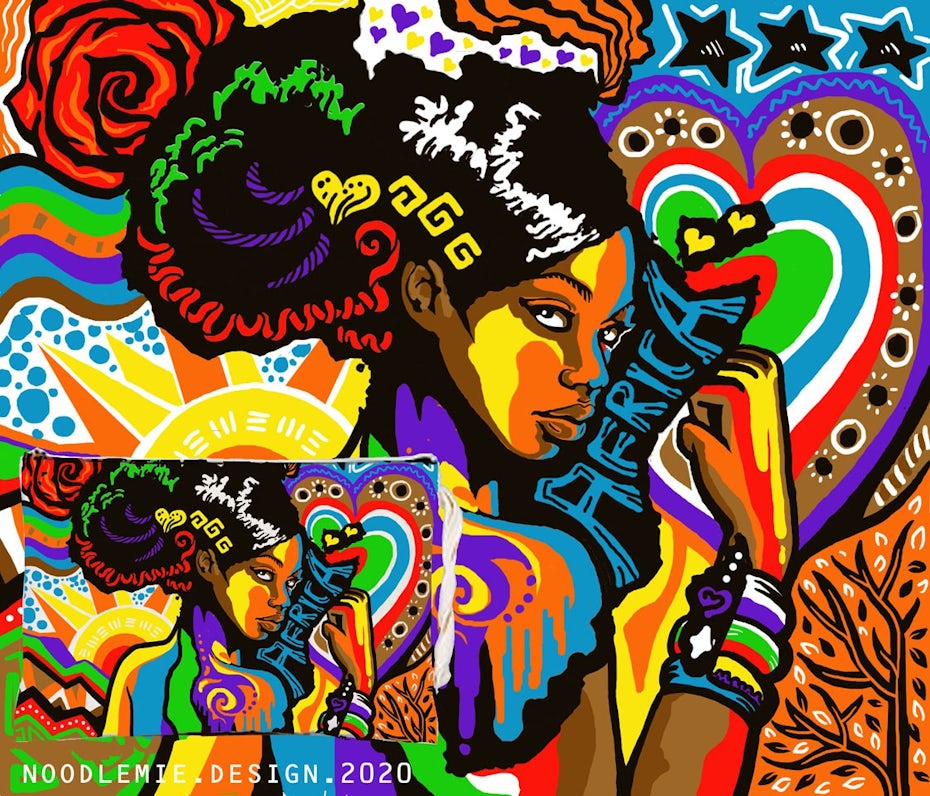
Work small and fast
There's no specific recommended size for thumbnail sketches, but ideally they should be small enough that you can fit dozens on the same page. They should be devoid of most detail: focusing on basic shapes and gestures. The key here is variety—in terms of poses, "camera" angles, and the specific reference image you're capturing. Sketch out as many ideas as you can think of, even if you think you found one you already like.
You should also emphasize speed and volume: aim for a minute or less for each thumbnail drawing. Working this way keeps you from getting too precious about any one particular drawing since the more time you put into a sketch, the more reluctant you will be to change things. You will also capture a sense of energy in the character pose through speedy linework.
Another of our Top Level character artists, BayuRIP, uses this phase to push the concept to new heights, "Combine some elements into the character, make it weird and unique. Try to explore shape and angle to make it different and add your personal style to the design".
Pay attention to overall shapes and silhouettes
When you have a good number of these (in the tens, at least) a useful technique is to block in silhouettes. This means painting over the shape so that you can see whether the image reads clearly based entirely on its outline. Ask yourself, can you tell what the image is supposed to be? What are the dominant shapes? Is the pose clear?
Keep a clear silhouette in mind: have ears, head shape and position of arms all clearly defined.
Cross The Lime summarizes, "It is even more important that you keep a clear silhouette in mind when designing. Have ears, head shape, position of arms clearly defined, so that you can recognize the character even when it is just the silhouette." If you have not done so, it's a good idea to brush up on shape language. This, (in addition to color later on) is a primary visual way to communicate traits and emotions such as stability, danger, or innocence.
Step 5: Finalize your sketch
—
If you're tired of sketching after that last step, I have good news for you!
Just kidding—it's time for more sketching. That said, it is a good idea to take a break at this point if you have the time to spare. Doing so will allow you to clear your mind and come back to your thumbnails with a fresh perspective. When you are ready to get back to work, find the thumbnail that evokes your concept most effectively. You are then going to create a larger, more detailed sketch that will serve as the basis for your final artwork.
Miniverso Studio highlights the importance of this stage, "The digitization process of our character will be easier with a well-elaborated sketch."
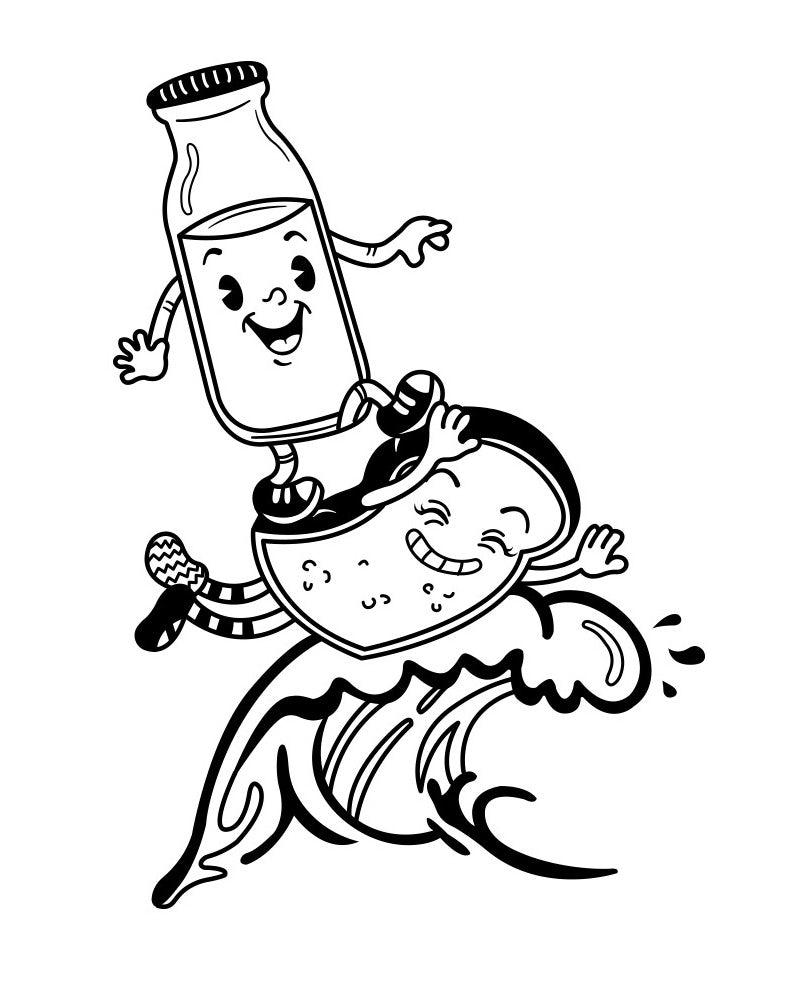
Finalize the pose and fine details
Your main concern at this stage should be the pose, so take the time to sketch a few options that show off the character's personality. If you are designing a character for an animator, you will also need to create a handful of orthographic T-pose sketches. These display a front, back, and side view of the character standing with their legs together and arms outstretched, and they give the animator a neutral view of the design on which to animate. T-poses can also be useful for figuring out clothing detail that may get lost in a more expressive pose.
Cross The Lime advises, "As you are sketching, remember that depending on use, your character must be able to move around. Will it need to hold a sign, jump over things, or bend down? Your character's anatomy must allow for these things. Ideally, your first character sheet has expressions along with the character turning around. What will a frontal view look like, side view, two-thirds, and maybe even from behind."
Besides the pose, you should be paying particular attention to details like facial expression, hand gestures, and clothing folds in order to get the design as far along as you can. "The facial expression, especially the eyes, significantly defines the mood of the character," Maylyn explains. "The posture and colors make the character pop out. So, everything needs to complement each other to make your character alive and believable."

The facial expression, especially the eyes, significantly defines the mood of the character. Their clothes add personality. These need to match to bring them to life.
Gather feedback before proceeding
If you are working on a team or with a client, this can be a good time to gather feedback before going any further—in which case, you may want to provide a few (no more than three) options. The purpose of this sketch is to guide your final artwork, so it is going to get harder to make any big changes to the design from here on.
Step 6: Render your character design
—
In a lot of ways, you have already successfully designed a character by this point. Design is less about illustrative flair and more about choices, creating the concept, and the bulk of that hard work is behind you. Now is where you start the render process, which is a fine art way of saying going from sketch to finished artwork. That, of course, is not to say that you should pay less attention to the render. In order for your character concept to land, it has to be truly presentable. In addition, you may notice details that you need to change the more realistic your design becomes.
Digitize the sketch
If you've been working on paper up until now, you will first need to digitize your sketch. You can do so fairly easily these days using a smartphone, as velcheva tells us, "I take pictures with my phone and send a personal message to myself in any messenger that is also installed on my laptop (this is much faster than scanning). I take a photo of this sketch, make it a translucent layer and draw over it in a graphics editor."
Be sure also to convert the image to black-and-white and adjust the contrast to really help the linework come through. It can also be helpful to trace a clean, digital sketch on top of this one using your brush tool or you may want to jump into inking if your character will include inked, cartoon lines. Finally, be sure to turn down the opacity on your sketch so that you can draw over it.
If you are sticking with physical artwork, you can use tracing paper to transfer a clean version of your sketch onto your canvas. From there, you simple render from the colors and materials of your preference.
Focus on value
Most artists recommend starting your render with a focus on value. Value is an art term that refers to light and shadow, and as this can be a challenge in and of itself, it is best to separate value from color.
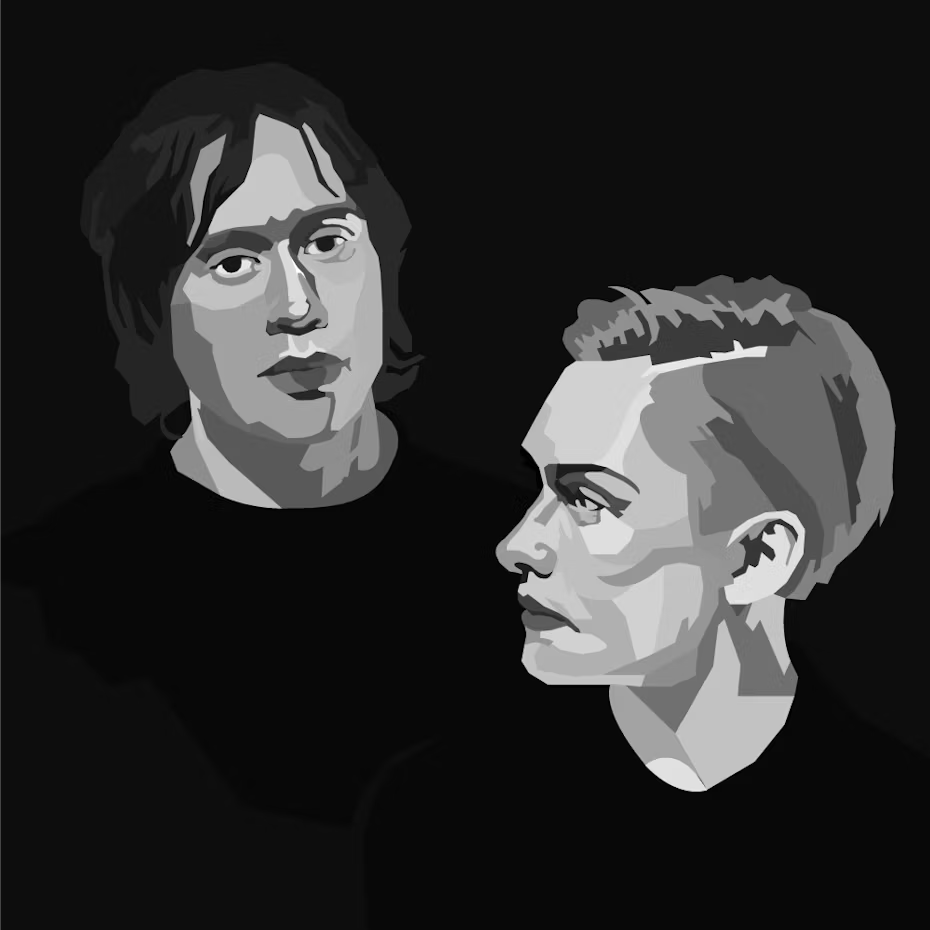
To block in value, you'll want to choose contrasting shades of grey for shadows, mid-tones, and highlights. Working in a separate layer beneath your sketch, color over your character with the mid-tone. Next, decide from what angle your light source is coming (don't forget secondary sources such as the light reflecting off of the floor back onto the character), and block in the general area for shadows and highlights on the character.
If you are going for a more painterly style, you can blend these tones by using a brush with a lowered opacity and sampling new grey tones periodically using the eyedropper tool. Otherwise, most cartoonish styles tend to keep the hard edges for their colors and shading. To get an idea of how all this is done, search for and study process videos from other character artists on YouTube.
Add color
When you get to the coloring stage, Miniverso Studio offer sound advice, "the 'for fun' final stage has arrived! Play your favorite song and look for the most welcoming place; in this phase, the final artwork is the reward for your hard work".

For colors, you should aim to choose those that contribute to the character's overall mood and story but that are also realistic. A firm grasp on color theory and color psychology as well as learning from the colors in your reference images all can help you identify the ideal color palette.
Working non-destructively in a separate color layer will also allow you to experiment. When you're ready to paint in your colors, use a blend mode such as "Color" in Photoshop in order to tint your value tones with the appropriate color.
Step 7: Add the finishing touches
—
No character lives in a vacuum. Well, technically Galactus lives in outer space, but for everybody else, it is important to create a sense of environment for an effective presentation.
Decide on a background
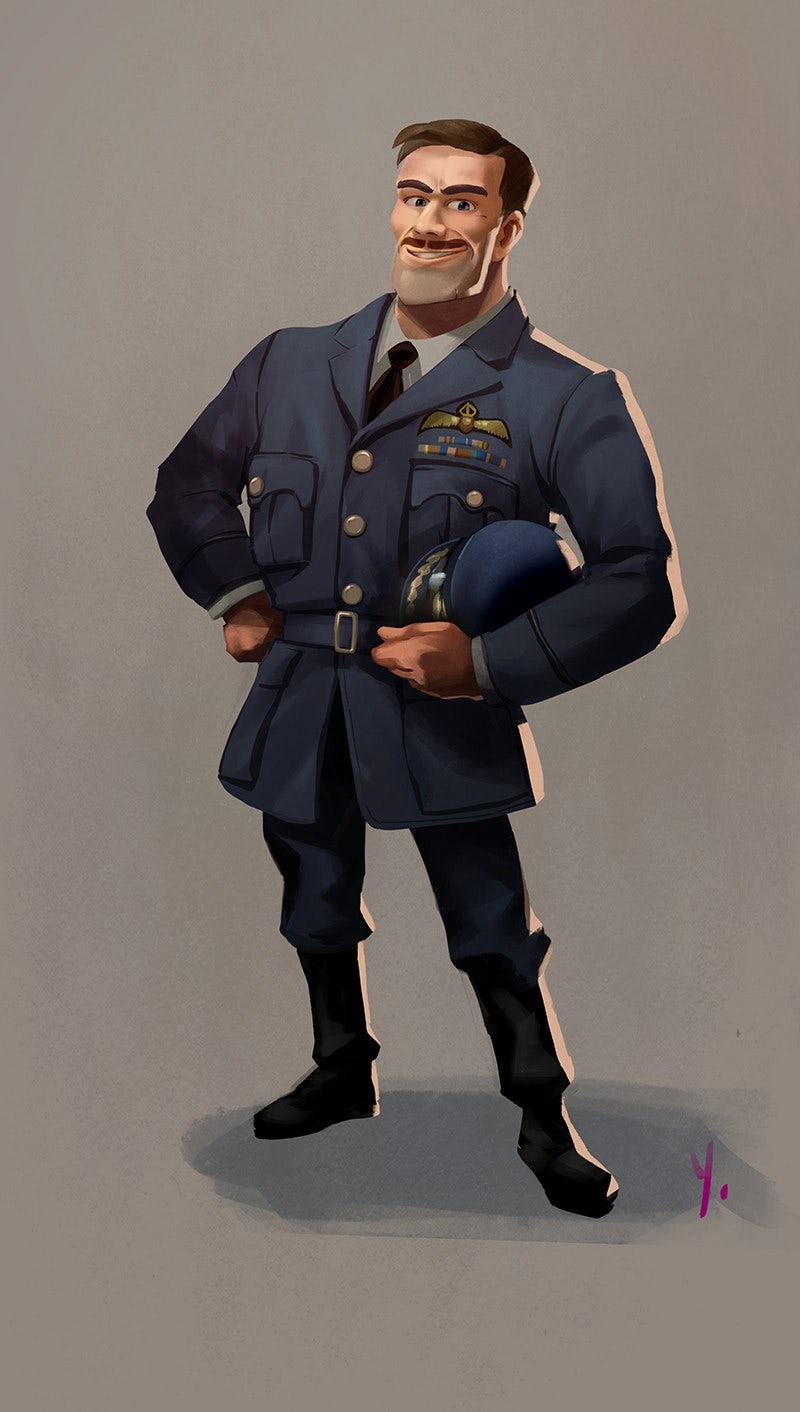
Generally, building a detailed background with scenery and props is not only a lot of extra work, it can distract focus from the character.
One option instead is to suggest a distant, out-of-focus background with roughly painted shapes behind the character. But most artists opt for a fairly simple background, often in a neutral greyish tone with a subtle color gradient or texture. The colors you choose can further enhance the intended mood of the character. Adding a floor shadow as well is a simple way to ground your character in space and reinforce the lighting.
Put together a presentation
Additionally, you are going to want to put together a client presentation. These presentations often include a variety of secondary poses (including neutral ones), outfits, facial expressions, and close ups and side profiles of the face.
These variations can be much simpler than the main action pose since that design should be the focus. Some artists like to show a few of the sketches and thumbnails so that the client can appreciate the development of the concept. Doing so not only gives the client options, it creates the sense that this character is alive rather than a doll pinned down to a static pose.
Of course, before you send your presentation off to your client, it's a good idea to take a step back and evaluate honestly how you yourself respond to the finished character.
"Ask yourself: Does this character make you giggle? In my case, a huuuge component of my work is the comedy factor," artist bananodromo describes her process. "I love silly details, grotesque expressions, surrealism, surprise effect. Of course, this doesn't apply to all projects […] but mainly for the most creative ones."
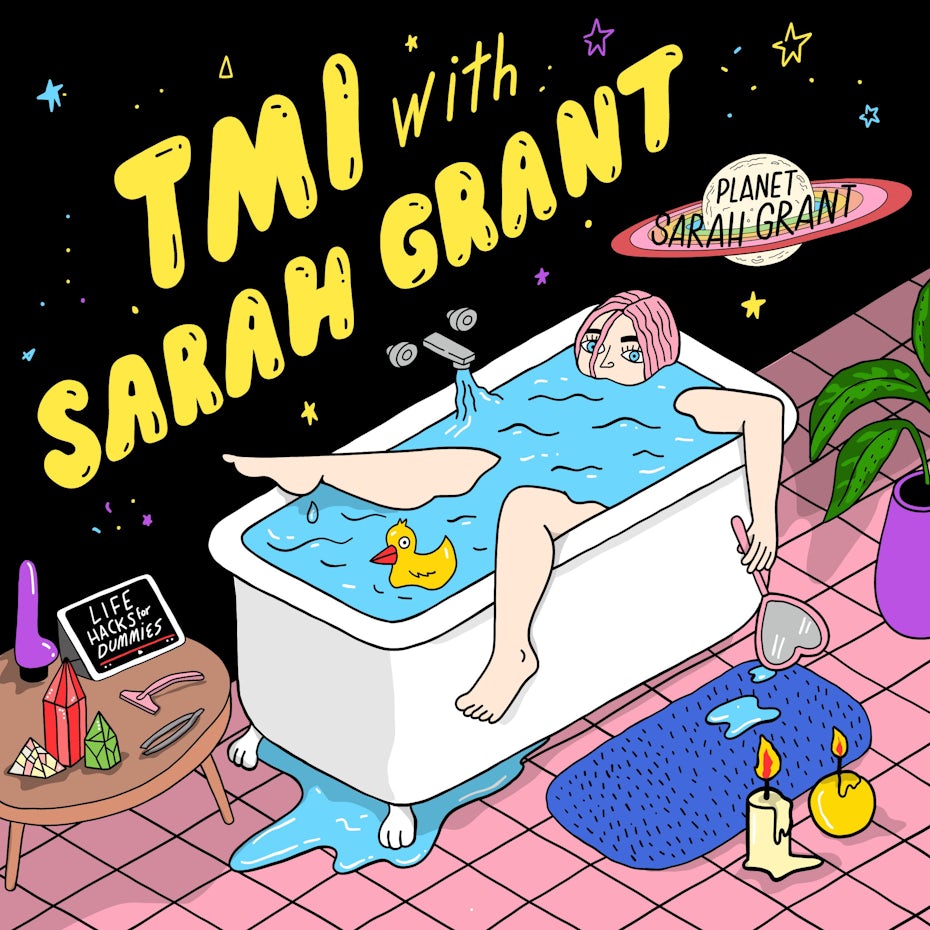
4 final tips on character design
—
Character design might look like artistic magic, but it actually involves thought, experimentation and hard work to get a successful result. While the steps we've laid out here can help give you a starting framework to develop your character designs, it takes time and practice to hone your skill as a character artist.
To that end, we'll leave you with some final words of advice from experienced character artists to help you along your journey:
1. Explore what you like, advises InQueen: "If you want to be a character designer, here is my advice: first of all, I think you have to be realistic and know what you are good at and what you are not. Try everything and see what you like. What do you really like that makes your heart burn? I love my job, and I know it doesn't suit everyone. Being a character designer, or a professional designer of any kind, goes beyond passion. It requires a lot of discipline, and hard work. Really hard work every day. It is a difficult path but a fun one."
2. Think on the bright side, like c-artworker: "Wherever you go, always draw doodles on napkins, draw paper, tablets, whatever. Over time you get a supply of shapes, gestures and figures. Don't be frustrated with rejections! You have a wonderful job where you don't have to wear a tie and suit and you don't have to make coffee for your boss!"
3. Or like Maylyn, be persistent. "Find time to practice. As an anime lover, I actually started sketching anime characters in my early years as an artist. And honestly, it helped me in honing my skills through time."
4. And last but not least, ananana14 shows us how character design truly is all about finding your niche: "When I got into graphic design, characters seemed like something so far away and unachievable. Then I got a cat, then another one, and yes, you guessed it, I started drawing cats. I began noticing how they run, how they sit, their poses and used that in my drawings. It also helped that cats don't sit around and wait for me to finish my drawing. That way I had to learn to pick up the most important traits, exaggerate them and avoid getting too caught up in the details."
Have a character in mind, but need a designer to bring it to life?
Our designers can create just about anything.
how to come up with character designs
Source: https://99designs.com/blog/art-illustration/character-design/
Posted by: harrisonourch1959.blogspot.com

0 Response to "how to come up with character designs"
Post a Comment